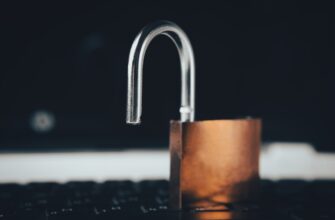- What is an Air-Gapped Crypto Wallet?
- Why Encryption is Non-Negotiable for Your Crypto Wallet
- Low-Cost Air-Gapped Wallet Solutions: Are They Viable?
- Step-by-Step Guide to Setting Up Your Encrypted Air-Gapped Wallet
- FAQ: Encrypting Air-Gapped Wallets on a Budget
- Can I use a free app for air-gapped encryption?
- Are low-cost air-gapped wallets as secure as hardware wallets?
- How often should I update an air-gapped wallet?
- What’s the biggest risk with DIY solutions?
- Can I encrypt a paper wallet?
What is an Air-Gapped Crypto Wallet?
An air-gapped crypto wallet is a storage solution completely isolated from internet-connected devices. Unlike hot wallets (online) or hardware wallets (USB-connected), air-gapped wallets operate offline, using methods like QR codes or SD cards to sign transactions. This physical separation creates an impenetrable barrier against remote hacks, malware, and phishing attacks—making it the gold standard for securing cryptocurrencies like Bitcoin and Ethereum.
Why Encryption is Non-Negotiable for Your Crypto Wallet
Even with air-gapping, encryption adds a critical layer of security. If your device is lost or stolen, encryption ensures private keys remain inaccessible. Here’s why it’s essential:
- Data Protection: Encrypts wallet files, rendering them useless without your passphrase.
- Physical Security: Thwarts brute-force attacks on stolen devices.
- Regulatory Compliance: Meets standards for institutional crypto custody.
- Peace of Mind: Adds redundancy against physical breaches.
Without encryption, an air-gapped wallet is like a vault with a glass door—secure from remote threats but vulnerable up close.
Low-Cost Air-Gapped Wallet Solutions: Are They Viable?
Yes! You don’t need a $200 hardware wallet for air-gapped security. Budget-friendly options include:
- Old Smartphones: Repurpose an unused Android/iOS device with apps like AirGap Vault (free).
- Raspberry Pi: Build a DIY wallet using a $35 Raspberry Pi Zero and open-source software.
- Offline Computers: Use a retired laptop with Tails OS or Electrum in offline mode.
- Paper Wallets: Generate keys offline via tools like BitAddress, then laminate or engrave them (cost: under $5).
These methods maintain security while costing under $50—often $0 if repurposing old tech.
Step-by-Step Guide to Setting Up Your Encrypted Air-Gapped Wallet
Tools Needed: Offline device (e.g., old phone), USB drive, encryption software.
- Prepare Your Device: Factory reset your phone/laptop. Disable Wi-Fi and Bluetooth permanently.
- Install Wallet Software: Transfer apps like Electrum or AirGap via USB. Never connect to the internet.
- Generate Keys Offline: Create a new wallet within the app. Write down the seed phrase on paper.
- Encrypt the Wallet: Enable AES-256 encryption in wallet settings. Use a 12+ character passphrase.
- Verify Transactions: Sign transactions via QR codes. Scan with a connected device for broadcasting.
- Secure Storage: Store the device in a safe. Keep seed phrases and passphrases separately.
Cost Breakdown: Old phone ($0), USB drive ($5), encryption software (free). Total: ~$5.
FAQ: Encrypting Air-Gapped Wallets on a Budget
Can I use a free app for air-gapped encryption?
Absolutely. Open-source tools like Electrum, Tails OS, and AirGap offer robust encryption at no cost. Always verify downloads via checksums.
Are low-cost air-gapped wallets as secure as hardware wallets?
Yes, if properly configured. The air-gap provides equivalent isolation. Encryption strength depends on your passphrase—not the device’s price.
How often should I update an air-gapped wallet?
Update software annually via offline methods. Never connect to the internet; transfer updates via USB after verifying signatures.
What’s the biggest risk with DIY solutions?
User error: weak passphrases, improper offline setup, or physical mishandling. Mitigate by testing with small funds first and using multisig setups.
Can I encrypt a paper wallet?
Indirectly. Encrypt the digital file before printing, or use BIP38 encryption for keys. Store printed copies in tamper-proof cases.
Final Tip: Pair your encrypted air-gapped wallet with multisignature (multisig) setups for enterprise-grade security at minimal cost. Always prioritize offline key generation and encrypted backups.








